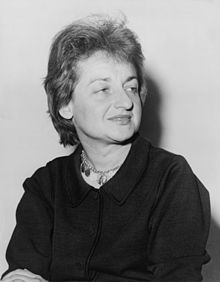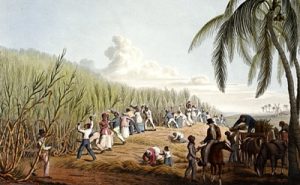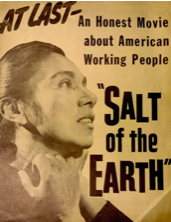In 1957, Smith College hosted the most important class reunion ever to be held in the history of America. Betty Friedan, a student of that class, attended the reunion to solve a revolutionary problem, which at the time had no name. She went with excitement to see her former colleagues and to catch up with them. Surely, after fifteen years, she assumed they would have all changed. Betty wanted to see who was successful and who was not. There were so many questions that she had for them. What were their lives like after graduation? Did any of them find a job? Were they ambitious? Were any of them unemployed? Were they able to get married and have kids? If they did, were they happy with their new lives after college? You see, Betty was not happy with her life. She wondered if anyone else felt the same way. Since she was serious in finding out the truth, she created a survey to ask her friends and colleagues. She found out that most women were dissatisfied with being housewives, just like her.1 As a result of this class reunion, Betty became passionate in improving the lives of women in America, which was the start of a big awakening for women’s rights. With every revolution, there is a spark to ignite it. The spark for what has become known as “second-wave feminism” was ignited in Betty Friedan’s heart.
In 1920, the nineteenth amendment of the United States Constitution, which announced that men and women had the equal right to vote, was passed.2 This amendment gave women the right to vote, but did it give them equality? Well, Betty Friedan committed much of her life to ensuring equality for women in America. Betty Friedan was born in 1921, the year following the passing of the nineteenth amendment. She grew up in an average family that worked hard to make ends meet. Her father Harry worked as a jeweler. Her mother Miriam was a journalist who gave up her job in order to give her children priority. Her mother was a wonderful role model for Betty. Betty had younger siblings: a sister named Amy and a brother named Harry. Her younger sister was considered by most to be the more beautiful of the two.3 Betty excelled academically, and did not care what people would say or think about her. She followed her mother’s footsteps and decided to pursue high school journalism. Betty was a member of many clubs, and she loved to work. She was also very active and was considered a maverick in high school. Betty knew that she had a voice and wanted the world to know that too. When the school paper turned down her idea to write her own column, she refocused her energies and started The Tide with other friends. The Tide was their own unique magazine. Being a maverick, outgoing, self-confident, and a young woman caused Betty to be considered socially unattractive until her college years.4
Betty graduated from high school and attended Smith College. She was very fond of writing poetry and studying psychology. Just like in high school, she was studious, ambitious, and a hard worker, which made her one of Smith College’s finest students. She received scholarships and other prestigious awards. She then graduated summa cum laude in 1942 with a degree in psychology.5 After college, Betty received a fellowship to work with the prestigious Erik Ericsson at the University of California at Berkeley. Her future was bright and everything was going by so quickly for her. However, her passion was journalism and she wanted to redeem what her mother had not been able to accomplish. This ambition led her to New York to pursue journalism. Betty fell in love with her journalism career, with New York, and with the opportunities offered in a big metropolitan city. New York City is a place where you can find yourself and maybe even find love. In New York, Betty met her future husband, Carl Friedan, a public relations firm manager. They had three children together: Daniel, Jonathan, and Emily.6
The honeymoon lasted a “New York minute.” They had a dreadful marriage. Carl Friedan was verbally and physically abusive to her. Betty was distraught. She loved her children and wanted to give them a wonderful life. As the years went by, she fell deeper and deeper into depression and was not satisfied in her life, especially with her troubled marriage. She lost her love of journalism, love of life, and love of her husband; and the responsibility of caring for her children consumed her mentally, physically, and emotionally. As much as she loved her children, Betty no longer wanted to feel the torture of just being a mother without an inspiring job.7
One day, a very important letter came in the mail. She did not know it then, but it was her invitation to freedom: the Smith College class reunion. Betty went to the reunion wanting to know if her friends from college were experiencing life the way she was. Betty was passionate about knowing the truth. Fearing that her friends would not be truthful, she decided to create a survey and pretend that it was part of a journalism and psychology assignment. The survey consisted of thirty-eight questions that focused on the women’s perspective of their lives. The survey questions included some of the following: How many children do you have? Are you happy in your relationship? Are you able to speak openly towards your husbands? Have you been interested in another man since marriage? Does your husband complain about your housework? What’s your highest form of education? Would you consider running for a political office?8 The results of the survey were very revealing and astounding. She found out that she was not the only one. This was a revelation to her and a call to action. With the survey results that she had collected, she had enough to start a Declaration of Independence for women’s rights. As she went over the survey results, she wanted to dig deeper. She decided to start interviewing women and asking them to describe their everyday lives more in detail. By doing this Betty found more intimate and heartbreaking stories of women that were struggling just like her. Unfortunately, women were perceived to adhere to certain protocols regarding their mannerisms, appearance, status, and beauty. Women were expected to be housewives and cater to their husbands without any complaints. Betty, however, despised these stereotypes placed on women and the survey results confirmed it.
On February 19, 1963, Betty Friedan published her first revolutionary book, The Feminine Mystique.9 The book encouraged and empowered women not to settle for being just housewives. In the book, Betty revealed the lives of many women who shared their experiences of being stressed, unappreciated, unloved, and beaten not just by their husbands but by society. These real-life stories touched numerous lives and created an awareness of respecting the dignity of women and the important role they play in society and in the home. This perspective not only gave the reader but the world an idea of what women had silently been struggling with. Her words were loud and powerful, and needed to be in order to make the audience aware of “the problem that has no name.”10
The Feminine Mystique was phenomenal, and as a result of her popularity, Betty became known as a feminist. She wrote a series of motivational books to empower women. In 1981, she wrote The Second Stage, followed by The Fountain of Age in 1993, and Life So Far in 2000. These books not only talked about her life after her terrible divorce, but also how she was able to find herself, overcome adversity against many odds, and pursue her dreams. Few people, especially women, have had the courage that Betty demonstrated. She had the courage to stand up and speak in favor of equality for women at a time when women were oppressed. She motivated all women to not only give and sustain life, but also to give life to a society that values and respects the dignity of women and their contributions as wives, mothers, and citizens.
Betty Friedan died on February 4, 2006. She will always be remembered as the woman who spoke up when others couldn’t. Just as Betty wrote in The Feminine Mystique, “The only way for a woman, as for a man, to find herself, to know herself as a person, is by creative work of her own.”11
- Betty Friedan, The Feminine Mystique (New York : Norton, 1963), 123. ↵
- National Archives and Records Administration, Washington, DC., 2002, “Woman Suffrage and the 19th Amendment. Teaching with Documents,” ERIC, (accessed April 8, 2018). ↵
- Jewish Women’s Archive Encyclopedia, March 2009, s.v. “Betty Friedan,” by Marion Kaplan. ↵
- Jewish Women’s Archive Encyclopedia, March 2009, s.v. “Betty Friedan,” by Marion Kaplan. ↵
- Salem Press Biographical Encyclopedia, 2013, s.v. “Betty Friedan,” by Eleanor B. Amico. ↵
- Salem Press Biographical Encyclopedia, 2013, s.v. “Betty Friedan,” by Eleanor B. Amico. ↵
- Magill’s Literary Annual, 2000, s.v. “Betty Friedan.” ↵
- Betty Friedan, “Betty Friedan’s 1957 Questionnaire at Smith College,” PDF. ↵
- Dan Seligman, “The Friedan Mystique,” Commentary Literary Reference Center 121, no. 4 (April 2006): 42-46. ↵
- Betty Friedan, The Feminine Mystique (New York: Laurel, 1982). 474. ↵
- Betty Friedan, The Feminine Mystique (New York : Norton, 1963), 472. ↵



25 comments
Lesley Martinez
This is such an interesting article! Betty Friedan is a significant figure to the “second-wave [of] feminism” It’s typically unheard of for someone to create a survey to ask friends and colleagues about their lives, yet a very smart idea. She was a hard worker as she did not let anything stop her, was able to start her magazine in high school, and surpassed the depression that came with her marriage. Her contribution to women’s rights is motivating. Her dedication to follow her mother’s footsteps as a journalist is evident as she was able to publish a series of motivational books. Great article!
Olivia Tijerina
The article has a unique ending. Because, even though the author’s message is for the reader to become exposed to a feminist topic, and mainly to understand a particular feminist woman(Betty Friedan) whom cultivated a society of women, also involve the importance of men to do the same. Men, too, is added to the message in the article, And I find that interesting because in order for people to evolve, we must do it on our own.
Rebeca Escobar
I think Friedan’s work should be recognized a lot more than it is, the only time I hear about her and her work is in history class. I have only heard of her book once in my lifetime, and it was only last year when I did. Regardless, it is such an empowering piece of work, and very impactful during their time and even today. Although there is nothing wrong with settling as a housewife, women shouldn’t adhere to stereotypes and I feel this book has helped females be where we are today.
Oscar Ortega
I was not familiar with Betty Friedan’s work, and I feel that’s a shame. Friedan’s drive to know if what she was going through was exclusive to her, and what it would mean if it wasn’t, was the starting point for a movement that was, based on the statistics she gathered, quite necessary, and thanks to her, steps have been made and continue to be made in American society today.
Christopher Metta Bexar
Betty Friedan is a pioneer for women. She devoted her life to improving the lives of other women.
She and Gloria Allred were called many things , most of which are not politely repeated. The one I heard most often was “dyke”. Mostly because they thought women had the right to be more than housewives if they chose. But they never said a housewife is a demeaning career not due respect. They said men should admire and appreciate the job of being a wife and mother.
Julissa Cantu
While short, the article explained the dynamic of the birth of second-wave feminism very well as well as the harsh life Friedan lived. The beginning and main content of the article was well written, however, the conclusion wrapped almost abruptly. The reader is also left with many questions about where Friedan took second-wave feminism besides the work of one book.
Dylan Sanchez
I never knew of Friedan prior to reading this article. She didn’t want to just improve her own life, but wanted to empower women all across the world, and did so with the help of a survey she used. I find it so fascinating that she connected to so many other people with her personal experiences and the small information she received from the survey.
Montserrat Moreno Ramirez
I think this was a common issue during that period because no one really cared or took into consideration about women. At many men eyes, women were just “good to have children and take care of them”, which no longer is the case thanks to women like Betty. They were and are the voice of all those shy women unable to speak freely. We should all be grateful that women like Betty existed since thanks to them we are now taken seriously
Luis Magana
I have never really been educated on women rights and how the movement started so this article was extremely interesting to read. I wasn’t aware of the fact that it all started because of her attendance in a class reunion and a conversation she had with another women. Sometimes all someone needs is a little push in the right direction in order to get started with something. I think its admirable how she helped so many women and began such a big movement.
Lyzette Flores
Reading this article reminded me of how there are still stereotypes to this day. I am very pleased that she didn’t just sit at home and not do anything about her suffering. I believe she was very smart and went out of her way for some help. Although alot of the times we don’t like to admit it but we all need some help from time to time.